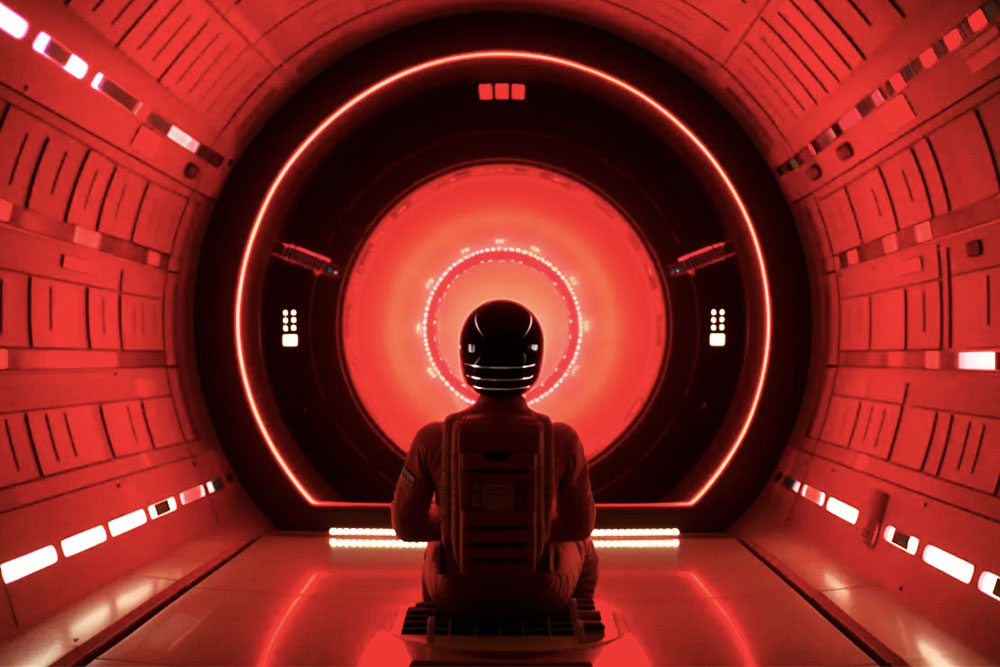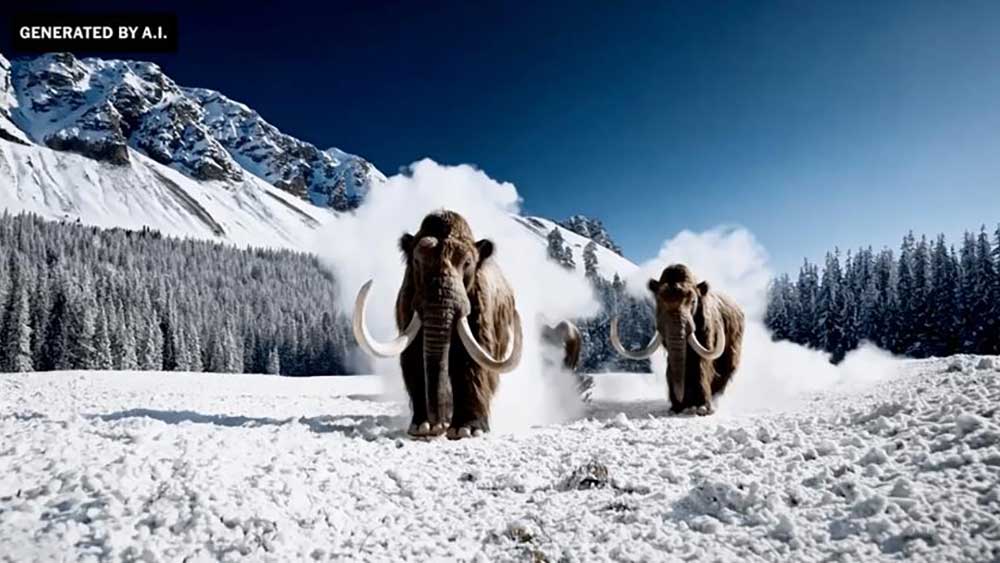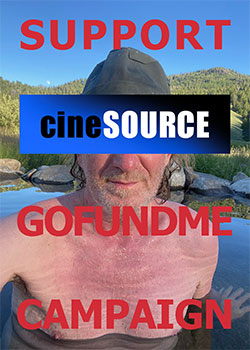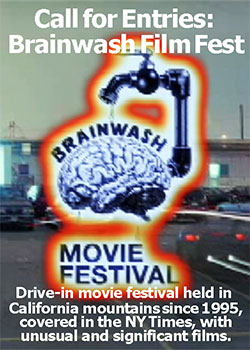Will AI Destroy Animation?
by Karl F. Cohen
PLEASE support our GoFundMe campaign to cover research expenses for our articles and rebuilding the cineSOURCE site.
AI HAS BECOME A HOT TOPIC, POSITIVE
and negative, and people are constantly speculating about its future. One friend told me, “Nobody is admitting that all the recent tech job layoffs are due to AI.” Is he correct? I needed to find out.
It seems there is a general belief that many companies will be able to use the new technology to enhance productivity and profit, but only a few people are asking how will it affect the workers.
Steve Lohr, who covers technology for The New York Times, was quite vague about that issue when he wrote on Feb. 1, 2024 that, “a new generation of artificial intelligence is poised to turn old assumptions about technology on their head. It will have its biggest impact on white-collar workers with high-paying jobs in industries like banking and tech.” He referred to a report that avoids saying the technology will do away with large numbers of jobs. Instead, he said, “Workers need to better prepare for a future in which AI could play a significant role in many workplaces that until now have been largely untouched by technological disruption.”
He did suggest some people may end up “building their AI replacements.”
Lohr also said, “There’s no question the workers who will be impacted most are those with college degrees, and those are the people who always thought they were safe.” He added, “Most experts expect that AI will mostly change jobs for the next few years rather than eliminate them — though that could change if the technology improves sharply.” He concluded saying workers will need “increased training to… adapt to a fast-arriving technology.”
More to the point, a discussion on “Philosophy Talk”, a radio show on KLAW on February 4th, 2024, focused on work created by artists. It suggested that some artists will be replaced, but AI will also influence workers to go beyond what they were capable of creating before AI existed. The speaker, Michael Frank, a Stanford professor, said that when it comes to making aesthetic decisions, AI will make mistakes including not being able to make the best subtle choices.
He believes AI is not capable at the present time to make those choices as there are endless possibilities of what our minds are capable of choosing and that AI is not that sophisticated. It works within a limited number of parameters. When he said AI isn’t capable of writing a book like “Moby Dick”, I flashed on it not being able to create a lovely film such as “The Man Who Planted Trees”.
Next, I asked Google, an older form of AI, what influence AI will have on animation. It replied, “AI can create more realistic characters, improve lighting and shading, and even add special effects. This can help animators to create more visually stunning animations. Overall, AI is having a major impact on the animation industry. AI tools automate tasks, generate content, and improve animation quality.”
I found one writer who feels AI will be quite destructive, and it may well wipe out jobs. A person (nicksaraev.com) posted on the internet “How AI Animation Will Decimate the Industry Within 5 Years”. He believes AI animation is already DEFINTELY BETTER than humans and many jobs will be replace by computers in less than five years. He predicts, “Animation models won't be perfect, at least not for the next few years, but they don't need to be.” The animation art used to illustrate the article is a far cry from Disney quality. They look like simple generic anime images.
Years ago, I remember hearing people claim that motion capture technology was going to replace animators. It was going to cut production costs and it would create a better-looking film. The technology turned out to be expensive and there was something about it that just didn’t look right, especially faces when they were not talking or moving. They looked dead. The technology is still in use at times, but it didn’t revolutionize animation.
I suspect the doom and gloom writer is correct: some jobs will be lost to AI. However, most will be with companies trying to cut costs on small budget shows. In the past people tried to create low budget 3D computer animated features and most of those producers have moved on to other approaches to making a living.
If the first producers to use AI animation to tell a story, will it usher in a new direction for creative people to explore new directions in animation? What if it is used by low budget producers. Should we expect not particularly attractive looking work? Will the first uses just be seen as a novelty or will it be a marvelous introduction to an exciting new technology that will be further refined?
It is too early to know how successful AI will be as a production tool. My preliminary study suggests AI may prove useful for artists interested in using it. It might turn out to be better suited to helping writers grind out run-of-the-mill scripts. In time, it may prove capable of creating both cartoony as well as photo-realistic animation. The public is already quite comfortable in the non-realistic world of animation so, I would say, don’t expert Disney to replace its animators with AI, as it will probably turn out to be labor intensive to turn out quality work.
As far as the current state of AI, a video released in February, 2024, by the company OpenAI, using their still-in-development Sora system, shows are realistic extinct mastodon.
“Several giant wooly mammoths approach treading through a snowy meadow, their long woolly fur lightly blows in the wind as they walk, snow covered trees and dramatic snow-capped mountains in the distance, mid-afternoon light with wispy clouds and a sun high in the distance,” was the verbal prompt See OpenAI’s latest show reel, released a few days ago.
The new reel appears to be a considerable leap forward for generative AI technology. It can now create video footage from a photo, artwork or just text input (instructional prompts). The technology is also excellent at making smooth camera movement (pans, zooms, trucking shots, aerial shots) and one report said in some cases the shot can last as long as a minute.
While the system can do impressive things, it has trouble with some of the basics. For example, it can show a person taking a bite out of something, but when the mouth opens the something may still be whole and not show any teeth marks. The system has yet to learn cause and effect.
Lip synch is another basic problem for software engineers to master. Right now, they can make lips move on a still image of a person’s face, but the result is ridiculous looking. It will probably take a lot of computer power and time to create convincing images of people talking with all the facial muscles moving underneath the skin in a convincing way. Eye and head movements should look natural. The nuances of facial expressions may turn out to be a major challenge to mastered, and harder if the person is talking.
The day the amazing reel was released, the NY Times said, “OpenAI has completed a deal that values the San Francisco artificial intelligence company at $80 billion or more, nearly tripling its valuation in less than 10 months, according to three people with knowledge of the deal.” Microsoft had put $13 billion into the company so far.
The young company is already famous for creating ChatGPT. OpenAI is also known for a recent scandal where the board fired CEO Sam Altman because they thought he wasn't addressing the dangerous aspects of AI. A few days later Microsoft reinstated him, whereupon he fired some of his board.
OpenAI has told the press it is aware of the potential for its technology to be misused. As a result, the company has chosen to slowly roll out the tool while they “assess critical areas for harms or risks." For more on OpenAI go here.
None of the software is for sale at present and when it is available it may not prove to be very useful for someone with questionable intentions. Someday, perhaps soon, lip synch will be perfected enough to create realistic images of politicians making fake statements or other kinds of deceptive propaganda. Hopefully the government and/or industry will find ways to detect bogus uses of the technology and warn the public while it is being removed from the internet.
Karl F. Cohen—who added his middle initial to distinguish himself from the Russian Karl Cohen, who tried to assassinate the Czar in the mid-19th century—is an animator, educator and director of the local chapter of the International Animation Society and can be reached .
Posted on Mar 10, 2024 - 05:14 PM
by Karl F. Cohen
PLEASE support our GoFundMe campaign to cover research expenses for our articles and rebuilding the cineSOURCE site.
AI HAS BECOME A HOT TOPIC, POSITIVE
and negative, and people are constantly speculating about its future. One friend told me, “Nobody is admitting that all the recent tech job layoffs are due to AI.” Is he correct? I needed to find out.
It seems there is a general belief that many companies will be able to use the new technology to enhance productivity and profit, but only a few people are asking how will it affect the workers.
Steve Lohr, who covers technology for The New York Times, was quite vague about that issue when he wrote on Feb. 1, 2024 that, “a new generation of artificial intelligence is poised to turn old assumptions about technology on their head. It will have its biggest impact on white-collar workers with high-paying jobs in industries like banking and tech.” He referred to a report that avoids saying the technology will do away with large numbers of jobs. Instead, he said, “Workers need to better prepare for a future in which AI could play a significant role in many workplaces that until now have been largely untouched by technological disruption.”
He did suggest some people may end up “building their AI replacements.”
Lohr also said, “There’s no question the workers who will be impacted most are those with college degrees, and those are the people who always thought they were safe.” He added, “Most experts expect that AI will mostly change jobs for the next few years rather than eliminate them — though that could change if the technology improves sharply.” He concluded saying workers will need “increased training to… adapt to a fast-arriving technology.”
More to the point, a discussion on “Philosophy Talk”, a radio show on KLAW on February 4th, 2024, focused on work created by artists. It suggested that some artists will be replaced, but AI will also influence workers to go beyond what they were capable of creating before AI existed. The speaker, Michael Frank, a Stanford professor, said that when it comes to making aesthetic decisions, AI will make mistakes including not being able to make the best subtle choices.
He believes AI is not capable at the present time to make those choices as there are endless possibilities of what our minds are capable of choosing and that AI is not that sophisticated. It works within a limited number of parameters. When he said AI isn’t capable of writing a book like “Moby Dick”, I flashed on it not being able to create a lovely film such as “The Man Who Planted Trees”.
Next, I asked Google, an older form of AI, what influence AI will have on animation. It replied, “AI can create more realistic characters, improve lighting and shading, and even add special effects. This can help animators to create more visually stunning animations. Overall, AI is having a major impact on the animation industry. AI tools automate tasks, generate content, and improve animation quality.”
I found one writer who feels AI will be quite destructive, and it may well wipe out jobs. A person (nicksaraev.com) posted on the internet “How AI Animation Will Decimate the Industry Within 5 Years”. He believes AI animation is already DEFINTELY BETTER than humans and many jobs will be replace by computers in less than five years. He predicts, “Animation models won't be perfect, at least not for the next few years, but they don't need to be.” The animation art used to illustrate the article is a far cry from Disney quality. They look like simple generic anime images.
Years ago, I remember hearing people claim that motion capture technology was going to replace animators. It was going to cut production costs and it would create a better-looking film. The technology turned out to be expensive and there was something about it that just didn’t look right, especially faces when they were not talking or moving. They looked dead. The technology is still in use at times, but it didn’t revolutionize animation.
I suspect the doom and gloom writer is correct: some jobs will be lost to AI. However, most will be with companies trying to cut costs on small budget shows. In the past people tried to create low budget 3D computer animated features and most of those producers have moved on to other approaches to making a living.
If the first producers to use AI animation to tell a story, will it usher in a new direction for creative people to explore new directions in animation? What if it is used by low budget producers. Should we expect not particularly attractive looking work? Will the first uses just be seen as a novelty or will it be a marvelous introduction to an exciting new technology that will be further refined?
It is too early to know how successful AI will be as a production tool. My preliminary study suggests AI may prove useful for artists interested in using it. It might turn out to be better suited to helping writers grind out run-of-the-mill scripts. In time, it may prove capable of creating both cartoony as well as photo-realistic animation. The public is already quite comfortable in the non-realistic world of animation so, I would say, don’t expert Disney to replace its animators with AI, as it will probably turn out to be labor intensive to turn out quality work.
As far as the current state of AI, a video released in February, 2024, by the company OpenAI, using their still-in-development Sora system, shows are realistic extinct mastodon.
“Several giant wooly mammoths approach treading through a snowy meadow, their long woolly fur lightly blows in the wind as they walk, snow covered trees and dramatic snow-capped mountains in the distance, mid-afternoon light with wispy clouds and a sun high in the distance,” was the verbal prompt See OpenAI’s latest show reel, released a few days ago.
The new reel appears to be a considerable leap forward for generative AI technology. It can now create video footage from a photo, artwork or just text input (instructional prompts). The technology is also excellent at making smooth camera movement (pans, zooms, trucking shots, aerial shots) and one report said in some cases the shot can last as long as a minute.
While the system can do impressive things, it has trouble with some of the basics. For example, it can show a person taking a bite out of something, but when the mouth opens the something may still be whole and not show any teeth marks. The system has yet to learn cause and effect.
Lip synch is another basic problem for software engineers to master. Right now, they can make lips move on a still image of a person’s face, but the result is ridiculous looking. It will probably take a lot of computer power and time to create convincing images of people talking with all the facial muscles moving underneath the skin in a convincing way. Eye and head movements should look natural. The nuances of facial expressions may turn out to be a major challenge to mastered, and harder if the person is talking.
The day the amazing reel was released, the NY Times said, “OpenAI has completed a deal that values the San Francisco artificial intelligence company at $80 billion or more, nearly tripling its valuation in less than 10 months, according to three people with knowledge of the deal.” Microsoft had put $13 billion into the company so far.
The young company is already famous for creating ChatGPT. OpenAI is also known for a recent scandal where the board fired CEO Sam Altman because they thought he wasn't addressing the dangerous aspects of AI. A few days later Microsoft reinstated him, whereupon he fired some of his board.
OpenAI has told the press it is aware of the potential for its technology to be misused. As a result, the company has chosen to slowly roll out the tool while they “assess critical areas for harms or risks." For more on OpenAI go here.
None of the software is for sale at present and when it is available it may not prove to be very useful for someone with questionable intentions. Someday, perhaps soon, lip synch will be perfected enough to create realistic images of politicians making fake statements or other kinds of deceptive propaganda. Hopefully the government and/or industry will find ways to detect bogus uses of the technology and warn the public while it is being removed from the internet.
Karl F. Cohen—who added his middle initial to distinguish himself from the Russian Karl Cohen, who tried to assassinate the Czar in the mid-19th century—is an animator, educator and director of the local chapter of the International Animation Society and can be reached .
Posted on Mar 10, 2024 - 05:14 PM

























